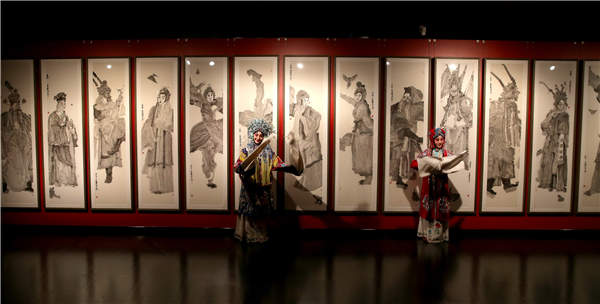
He started learning traditional Chinese ink painting at 6 and the actors became the main characters in his paintings.
"They are like family members. I do not just paint Peking Opera figures but also the actors," he says.
Unlike Ding, Ma Shulin, the deputy director of the National Art Museum of China, recalls that he watched the classic Peking Opera show, Mu Guiying Takes Command of Troops (Mu Guiying Gua Shuai), for the first time in 1985 at Beijing's Chang'an Grand Theater when he was 29 years old.
"I didn't know the story. I was drawn to the martial arts and the characters. After returning home, I painted a scene from the show," says Ma, 60, who was born in Hebei province and graduated from Lu Xun Academy of Fine Arts.
After his first experience, Ma went on to watch more Peking Opera shows and continued painting Peking Opera figures.
"Though Peking Opera stories are not real, the characters reflect friendship, romance and family values," says Ma.
He also says that traditional Chinese ink painting and Peking Opera are national treasures.
"I hope the audiences can see the beauty of these two art forms in the exhibition," he says.
According to Ma, one of the most famous Chinese artists who portrays Peking Opera figures is Guan Liang (1900-86). His Peking Opera themed works include Stealing the Royal Horse and Farewell to My Concubine.
Guan's unique approach, rather than being realistic, has inspired many Chinese artists.
Zhang Peicheng is one of those inspired by Guan. He has 10 works at the exhibition. Zhang, 68, started painting Peking Opera figures a decade ago.
Zhang, who once lived near Shanghai Dashijie, a popular stage entertainment landmark, watched many Peking Opera shows and he is most interested in Peking Opera facial masks.
"Each facial mask represents a different character. I try to capture something which is between real and surreal," he says.
If you go
East exhibition hall of the National Center for the Performing Arts. No 2 West Chang'an Avenue, Xicheng district, Beijing. 010-6655-0000.


















































